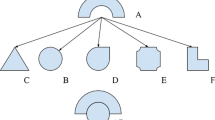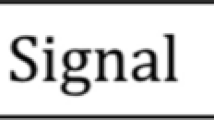Abstract
In a previous paper (Vega, n.d.), an integrated account of Rosen’s relational biology and Peirce’s semiosis has been proposed. Both theories have been compared and basic concepts have been posited for the definition of a unified framework for the study of biology, as well as a method for the identification and analysis of the presence of signs in an organism. The analysis of the existence of semiotic actions in an organism must, without a doubt, begin by considering each of the rules that constitute the genetic code as a candidate for a semiotic relation. Transcription and translation, which constitute protein synthesis, are the basis of the specificity that the organism needs to maintain itself in its environment and reproduce, and the precondition of the existence of any other possible semiosis. Applying the concepts and method of the aforementioned work, this paper analyzes which of the biological processes involved in protein synthesis correspond to semiotic actions and the type of the signs identified, according to Peirce’s classification of icons, indices and symbols. The results of this work demonstrate the theoretical consistency and the practical utility of integrating the theories of Rosen and Peirce, offer a way to identify other signs in an organism, and support a critical analysis of code biology and protosemiosis, two accounts that deny the possibility of explaining the signs in an organism with Peirce’s semiosis.










Similar content being viewed by others
Notes
In this paper, a knowledge of the basic concepts of Rosen’s relational biology and Peirce’s semiosis is assumed. For a better understanding of what is expounded here, it is convenient to read first Vega (n.d.). More information on relational biology and its relationship with biosemiotics can be found in Vega (2018).
The mapping of continuous lines corresponds to the representation of a component in relational biology. Dashed lines are used in the mapping representing the determination of the interpretant.
Whenever the interpretant of a sign is associated with the efficient cause of a component, it would be more correct to associate it with the union of efficient and formal causes. However, in a natural system, efficient and formal causes of a component lead together from the input to the output. For simplicity, references to the formal cause are omitted.
In Short’s original, interpretant, representamen, object, and purpose are represented by the letters R, X, o, and P. To facilitate explanation, in this quotation the letters have been replaced by the concepts they stand for.
For a more detailed description, see the quoted paper.
A complete description of the phases into which the translation process breaks down is not presented here, and only the elements necessary for the argument are considered.
The figures in this paper represent the concurrence of one or more elements to form the efficient cause, the input or the output of a component, with dotted lines. In this case, the input is formed by an mRNA codon and an aminoacyl tRNA.
Descriptions of standard biology, relational biology and semiotics are integrated in the analysis presented. The last two perspectives are rolled out in this paper and in Vega (n.d.). A more detailed description of all the biological processes studied in this paper according to standard biology can be found in Freeman et al. (2019).
Louie, 2009, p. 113.
The synthesis of proteins considered globally, and each of the steps into which it can be broken down, contribute to the closure to efficient cause of the organism.
The efficient cause entails that the input entails the output.
Hoffmeyer (2010, p.371): “The act of interpretation … seems to be a key to the production of meaning when this word is used in a situated local sense”.
The incorporation of an amino acid and a tRNA anticodon into an aatRNA should not be considered a real relation between them that defines an index (because it has not originated from the laws of physics alone), but rather the materialization of a symbol.
According to the proposed definition, each semiotic relation of the genetic code is the union of a component (aaRS: ACtRNA --> aa) and the relation by which the aa determines that the ACtRNA determines the aaRS.
Pennacchio et al. (2013).
Lambert et al. (2018).
This paper answers the questions posed by Brier and Joslyn in their analysis of code semiosis: (1) what can “interpretation” mean, if it is not code following? And (2) what do code-semioticians call code following, since it’s clearly not “interpretation” (2013, p. 153). Furthermore, it is shown that these authors confuse the concepts of interpreter (the agent who performs the interpretation) and interpretant. For example, they claim that a ribosome is an interpreter. However, as seen above, translation is a semiotic process in which a chain of messenger RNA codons is the sign, a chain of amino acids is the object, and a ribosome and a set of aminoacyl tRNA synthetases form the interpretant.
References
Barbieri, M. (2008). Biosemiotics: a new understanding of life. Naturwissenschaften, 95(7), 577–599
Barbieri, M. (2009). Three types of semiosis. Biosemiotics, 2(1), 19–30
Barbieri, M. (2015). Code Biology: a new science of life. Springer
Brier, S., & Joslyn, C. (2013). What does it take to produce interpretation? Informational, peircean and code-semiotic views on biosemiotics. Biosemiotics, 6, 143–159. https://doi.org/10.1007/s12304-012-9153-5
Favareau, D. (2009). The logic of signs. Essential Readings in Biosemiotics. Biosemiotics (Vol. 3). Springer
Freeman, S., Quillin, K., Allison, L., Black, M., Podgorski, G., Taylor, E., & Carmichael, J. (2019). Biological Science. Pearson
Hoffmeyer, J. (2008). Semiotic scaffolding of living systems. In M. Barbieri (Ed.), Introduction to Biosemiotics. Springer. https://doi.org/10.1007/1-4020-4814-9_6
Hoffmeyer, J. (2010). A biosemiotic approach to the question of meaning. Zygon(r), 45(2), 367–390. https://doi.org/10.1111/j.1467-9744.2010.01087.x
Lambert, S. A., Jolma, A., Campitelli, L. F., Das, P. K., Yin, Y., Albu, M., & Weirauch, M. T. (2018). The human transcription factors. Cell, 172(4), 650–665. https://doi.org/10.1016/j.cell.2018.01.029
Louie, A. H. (2009). More than life itself: A synthetic continuation in relational biology. Ontos Verlag
Pennacchio, L. A., Bickmore, W., Dean, A., Nobrega, M. A., & Bejerano, G. (2013). Enhancers: five essential questions. Nature Reviews. Genetics, 14(4), 288–295. https://doi.org/10.1038/nrg3458
Rosen, R. (1991). Life itself. A comprehensive enquiry into the nature, origin and fabrication of life. Columbia University Press
Sharov, A., & Vehkavaara, T. (2015). Protosemiosis: Agency with reduced representation capacity. Biosemiotics, 8(1), 103–123. https://doi.org/10.1007/s12304-014-9219-7
Short, T. L. (2007). Peirce’s theory of signs. Cambridge University Press
Vega, F. (2018). A critique of Barbieri’s code biology through Rosen’s relational biology: Reconciling Barbieri’s biosemiotics with peircean biosemiotics. Biol Theory 13, 261–279 (2018). https://doi.org/10.1007/s13752-018-0302-1
Vega, F. (n.d.) An integrated account of Rosen’s relational biology and Peirce’s semiosis. Part I: components and signs, final cause and interpretation. In review
Author information
Authors and Affiliations
Corresponding author
Additional information
Publisher’s Note
Springer Nature remains neutral with regard to jurisdictional claims in published maps and institutional affiliations.
Rights and permissions
About this article
Cite this article
Vega, F. An Integrated Account of Rosen’s Relational Biology and Peirce’s Semiosis. Part II: Analysis of Protein Synthesis. Biosemiotics 14, 717–741 (2021). https://doi.org/10.1007/s12304-021-09438-8
Received:
Accepted:
Published:
Issue Date:
DOI: https://doi.org/10.1007/s12304-021-09438-8




